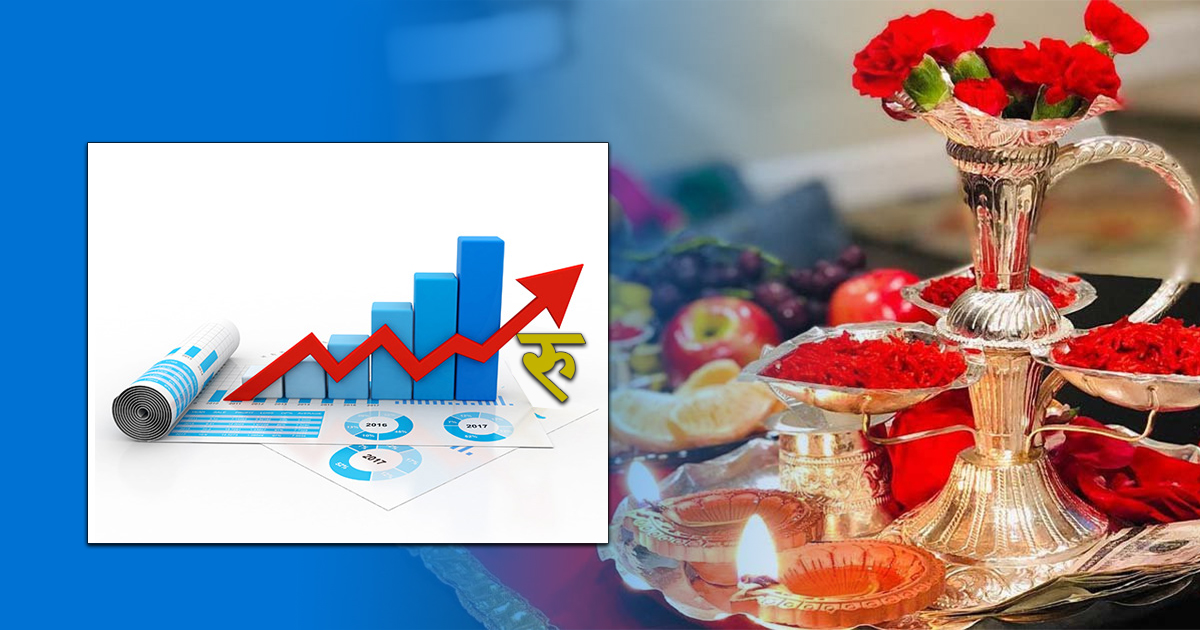Kathmandu: Even as the festive season approaches, economic activities do not seem to be moving as expected.
Despite the upcoming festivals of Dashain, Tihar, and Chhath, Letters of Credit (LCs) for festival-targeted imports have not increased as anticipated.
Bankers say that while payments through drafts and telegraphic transfers (TTs) for small imports look positive compared to last year, imports through LCs have not shown the expected improvement.
With only about three weeks left for Dashain, customs officials also say statistics show no significant difference in imports. The Department of Customs reported that imports from Rasuwagadhi checkpoint on the China side have come to a complete halt, while imports from Tatopani are very minimal.
About one-third of Nepal’s yearly economic activities take place during festivals such as Teej, Dashain, Tihar, and Chhath. In Ashoj (September-October) and Kartik (Oct-Nov), when Dashain and Tihar occur, not only does “currency in circulation” rise, but electronic transactions—rapidly expanding in recent times—also increase. Especially during Dashain and Tihar, ATM withdrawals and QR payments tend to go up.
Customs data show that compared to other months, imports rise in the month preceding Dashain due to festival-targeted imports.
The government provides a bonus equal to one month’s salary to civil servants, teachers, and security personnel including the army and police during Dashain. Similarly, employees in banks, insurance, and other formal sectors also receive a month’s salary as bonus, which increases money flow in the market and spending as well. This makes economic activities more dynamic during Dashain, Tihar, and other festivals compared to other times of the year.
Not only transportation and airlines, but wholesale and retail trade also increase during this period. Offers are made on household electronics such as televisions, mobile phones, and refrigerators targeting the festive season, boosting trade in such items during Dashain and Tihar.
Bankers say that in the current fiscal year, Nepal’s foreign trade and the opening of LCs for imports do not indicate a festive economic boom.
Piyush Raj Aryal, Chief Finance Officer of Laxmi Sunrise Bank, said although the use of TTs and drafts for import payments increased until Shrawan (July-August), the demand for foreign currency declined as northern checkpoints remained closed. He added that LC transactions have not shown expected improvement compared to previous years.
Ardash Bajgain, Deputy CEO of Nabil Bank, also said that the opening of LCs in Shrawan and Bhadra (August-September) targeting the festive season has not increased as expected. Last year, LC transactions were high due to imports of raw materials for soybean oil, which were then exported to India, but this fiscal year no such situation has been seen, he said.
Bajgain further noted that since both Chinese checkpoints remain closed, and large volumes of vehicles had already been imported in Baisakh (April-May) and Jestha (May-June), there is little demand for LCs to import vehicles for Dashain this year.
Bankers, however, note that imports of regular consumables and household electronics show some improvement.
Sudesh Khaling, CEO of Everest Bank, said LCs for imports have not opened at levels that could energize the Dashain market. He added that last year, high LC openings for raw material imports to export oil to India had driven the market, but stricter rules from India this year mean such demand is absent.
Dr Prakash Kumar Shrestha, a former Executive Director of Nepal Rastra Bank and a member of the National Planning Commission, said that in Nepal’s economy, economic activities naturally rise in Ashoj and Kartik during Dashain and Tihar compared to other times. However, he added that no exact analysis exists on how much percentage these festivals contribute to annual economic activity.
“Since employees get one month’s salary as bonus, and data on increased ‘currency in circulation’ during that time, it is evident that economic activities rise in Ashoj and Kartik compared to other months,” Shrestha said. “Looking at import levels before Dashain, currency in circulation, and other factors, we can say that economic activities are higher during festivals compared to the rest of the year.”
Bankers further analyze that apart from mandatory spending, people no longer wait until festivals for shopping, which has reduced festive activities compared to the past.
Also, with many youths—who usually spend on fashion, expensive clothes, and restaurants—migrating abroad, festival-time economic activity in Nepal has weakened.
In the past, people used to wait for Teej or Dashain to buy clothes, but now shopping happens anytime, reducing the festive surge. However, they note that spending on home decoration and lighting has increased during festivals due to improved household finances from remittances.
Bank and financial institution lending also shows no increase in imports for Dashain. In the first month and a half of the new fiscal year, loans have not grown as expected.
Last year, Rs 60 billion in loans was disbursed during Shrawan and Bhadra. This fiscal year, loans have not grown even by Rs 10 billion compared to Asar. Data show that compared to Asar, loans slightly decline until the second week of Shrawan each year and then gradually increase.
Although Rs 60 billion in loans was disbursed in the first two months of the last fiscal year, this year lending has not risen in the same period. Since Dashain is early this year, beginning in the second week of Ashoj, LCs for festival-targeted imports should already have been opened and reflected in loan statistics. However, that is not the case. It means imports are unlikely to rise significantly in the coming days.
Even though some goods are imported from China during festivals, both main trade checkpoints, Tatopani and Rasuwagadhi, have been blocked by floods and landslides. Customs officials say this has nearly halted imports through draft and TT payments as well.



Comment Here